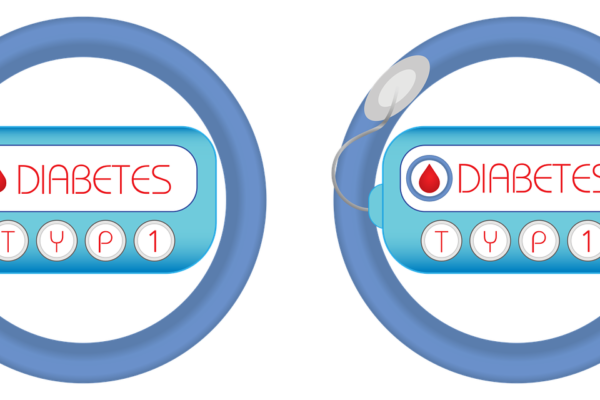Use of E-commerce in Healthcare Sector
E-commerce, which enables transactions to be conducted via the internet, has significantly changed how businesses are conducted. From social networking to growing use of artificial intelligence, it has brought about an entirely novel experience in our lives. E-commerce, like it has in other industries, has sparked a major upheaval in the healthcare sector as well.
E-commerce may be used in a range of ways in the healthcare industry. These include e-medical services, electronic healthcare record management, patient care, healthcare-related retail, and online nursing. We are able to develop a very collaborative and efficient healthcare sector thanks to healthcare e-commerce.
The healthcare sector has adopted e-commerce in a number of different ways:
- Online pharmacies: The growth of online pharmacies, where people may obtain prescription prescriptions, over-the-counter medicines, and other healthcare supplies, has been assisted by e-commerce. These websites frequently offer thorough product descriptions, safe payment methods, and home delivery services.
- Telemedicine: E-commerce has facilitated the development of telemedicine platforms, which use online video consultations to link patients and medical specialists. Patients can use electronic means to make appointments, communicate their health issues, get advice from doctors, and even order prescriptions.
- Wellness and Health E-commerce Stores: Many healthcare organisations, clinics, and wellness businesses run online shops where people can buy wellness and health products. These could include nutritional supplements, exercise gear, medical technology, and instruments for keeping an eye on your health.
- Appointment Scheduling and Patient Portals: E-commerce technologies are used to build online patient portals that let patients communicate with healthcare professionals, access their medical information, and check test results. This enhances patient engagement and streamlines administrative procedures.
- Medical goods: Both patients and healthcare professionals can find a variety of medical goods on e-commerce platforms. This includes things like walkers, wheelchairs, glucose metres, blood pressure monitors, and surgical equipment.
- Health Information Websites and Blogs: A lot of websites and blogs that provide health information have e-commerce features where they can sell books, educational materials, and healthcare-related items. These online resources seek to inform and enlist people in taking charge of their health.
- Apps for health and fitness: A lot of mobile apps for health and fitness have e-commerce capabilities that let users pay premium subscriptions, gain access to premium content, or purchase fitness-related goods and services directly from the app.
- Genetic Testing Kits: Direct-to-consumer genetic testing businesses sell genetic testing kits to people online through e-commerce platforms. Customers can place an online order for the kits, collect a sample at home, and get the results electronically.
- Online Health Communities: E-commerce platforms also promote online health forums and communities where people may connect with one another and seek support for comparable health issues. These platforms might also include extra services like webinar access, professional guidance, or buyable e-books.
The way healthcare products and services are accessible, provided, and managed have all been revolutionised by e-commerce, which has had a tremendous impact on the healthcare sector.
A number of advantages of utilising E-commerce in healthcare industry are noticed such as in care for patients and accessibility, saving time and money, larger market for medical goods, streamlined processes etc. Some of the disadvantages of the same include; privacy and security concerns, limited physical examination and personal touch, regulatory compliance, delivery and logistical challenges etc.
Healthcare E-commerce Market
Healthcare E-commerce describes the buying and selling of goods and services related to healthcare over the internet. Everyone’s lifestyle has changed over the last few years as a result of e-commerce. E-commerce has also had a big impact on the healthcare sector, affecting the way that industry looks. It include purchasing drugs, medical devices, supplies, and equipment online. Healthcare e-commerce benefits include convenience, lower prices and discounts, a wide selection of products, replacement and refund policies, reviews and customer feedback, and quality certifications. Instead of going to a real store, many customers now fulfil chores required of a traditional pharmacy online. Additionally, clinics, hospitals, and doctor’s offices can streamline their procurement of medical supplies and equipment by using e-commerce. Also, to facilitate direct purchase and delivery of their products, medical equipment makers are gradually moving their activities online.
Due to ongoing advancements in the e-commerce sector and online medicine sales, interest in the global healthcare e-commerce market is growing. Online business merchants have added another department for healthcare as clients turn to the internet for their medical care needs. A few medical services items are dispersed through e-commerce channels since the healthcare e-commerce market is on the rise. From this point forward, the future of the global medical care internet company market depends on the absolute volume of revenues.
The market for medical services has developed into a diverse area where transactions and acquisitions are made through a variety of techniques. Customers now prefer using online sales channels above all others, and this trend has aided in the growth of the global healthcare e-commerce market. Specialists and clinical professionals have begun to trust a few healthcare e-commerce platforms. This method has taken on a crucial role in the growth of the global healthcare e-commerce market. Facilities, urgent care centres, and doctor’s offices can streamline their acquisition of medical equipment and supplies by doing business online. Manufacturers of medical equipment are increasingly turning to the internet to enable direct product orders and deliveries.
The healthcare industry is rapidly digitising, and consumers are becoming accustomed to using the internet for their healthcare service needs by conducting research on symptoms or specific doctors, buying products, paying bills, and generally becoming more informed about their options. The online sales of healthcare products have drawn a growing amount of interest from the e-commerce sector.
The increased potential in the global healthcare e-commerce market have prompted well-known investors to make sizable bets. This pattern has given the growth diagram of the vendors operating in the global healthcare e-commerce market a strong boost. By introducing a few new products and stages inside healthcare services, Amazon has upended the healthcare e-commerce market. The company launched Amazon Comprehend Medical, a platform that uses AI to assist in compiling health records. Amazon has gotten near to dominance in the global healthcare e-commerce market thanks to this strategy.
It is safe to assume that e-healthcare has emerged as the most popular online industry given the explosion of e-commerce we have witnessed in the previous two years in the healthcare industry. The overall amount spent on healthcare has reportedly increased by 4.6 percent in the past year, reaching 3.8 trillion dollars, according to a recent CMS study. These figures are specific to the US only.
With a compound annual growth rate (CAGR) of 18.5%, the worldwide healthcare e-commerce market will increase from $309.62 billion in 2022 to $366.94 billion in 2023. At least temporarily, the Russia-Ukraine conflict hampered the possibilities of a COVID-19 pandemic-related global economic rebound. The conflict between these two nations has resulted in supply chain interruptions, a rise in commodity prices, and economic penalties against other nations, which have all had an impact on various markets throughout the world. At a CAGR of 18.9%, the healthcare e-commerce industry is anticipated to reach $732.3 billion in 2027.

The market is divided into two categories based on type: drugs and medical devices. Due to expanding treatment demand, more internet usage, safer and easier patient delivery methods, and government initiatives, drugs are expected to increase the most during the anticipated time.
The market is divided into three categories: telemedicine, caregiving services, and medical consultation. Due to its widespread use by doctors and patients, increased demand for telemedicine, and the growing number of mobile telemedicine applications, telemedicine is predicted to grow the most during the expected period.
The Global Healthcare E-Commerce Market is divided into North America, Europe, Asia Pacific, and the Rest of the World based on regional analysis. Due to the region’s advanced healthcare IT industry, better reimbursement options, higher adoption of digital healthcare, and rising investments by major market players, the North American region is anticipated to experience the largest growth in the global healthcare e-commerce market when compared to other regions during the projected period. Asia Pacific was the second largest region in the healthcare e-commerce market.
The Indian healthcare market is expected to increase by $280 million over the next five years, and eCommerce in the healthcare sector is booming. After Brazil, India has the second-fastest increasing online population worldwide. Investors are skeptical that this will persist long and that this bubble will collapse quickly despite the assumption that 7 out of 10 people would shop online and the promise of a very significant market opportunity for online. By 2020, it is projected that this market will even reach $90 billion.
There is a huge demand from Tier II and Tier III cities because they receive the majority of traffic and healthcare facilities are still emerging in those areas. Additionally, the e-tailing businesses in healthcare have been able to seize the chances presented to them in the industry thanks to the recent increase in GDP and the population’s desire for basic healthcare services. As a result of a paradigm shift in how things are done, India’s healthcare system has a very bright future.
With a focus on the global market, the main competitors in the industry include GE Healthcare, Siemens Healthcare, Cerner Corporation, CVS Health, Amazon, Exactcare Pharmacy, Flipkart Pvt. Ltd., Alibaba Group Holding Ltd., eBay Inc., Remdi SeniorCare, Lloyds Pharmacy Ltd., McCabes Pharmacy.
The E-commerce healthcare market is fragmented and sees repeated mergers and acquisitions. As retail pharmacies expand their primary care and at-home medical offerings, CVS Health will pay $8 billion to purchase the home care startup Signify Health. Amazon and UnitedHealth Group’s Optum medical care provider firm were reportedly interested in Signify Health or at least looked into the possibility of acquiring the home care provider, but CVS beat them out. CVS Health will acquire Signify Health for $30.50 per share in cash, representing a total transaction value of approximately $8 billion. With the acquisition of Signify Health, CVS Health will expand the range of healthcare services it offers.
The competitors in the market are thus investing and acquiring companies rapidly as they expect a favorable market growth in the healthcare segment. The prospects for the same look bright as per market studies.
Conclusion
With the development of technology and mobile internet/apps, the online healthcare market is already very vast and is just growing daily. A few of the new opportunities/innovations in the healthcare sector are Elderly Care Givers, Palliative Care Givers, Elderly Care Givers via Video Conferencing, Telemedicine, Online Consultancy, etc.
Healthcare eCommerce is set for an exciting period of explosive growth in the next three to five years, according to analysis of the trends in the industry as a whole. It is anticipated that this would result in significant investments in supporting infrastructure and novel, game-changing business models.






Leave a Reply